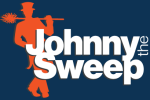Five easy ways to check if your Chimney Sweep is doing things the right way...
In recent months, I've come across a small number of stoves and fires that evidently have not been previously swept correctly and safely. In all cases, the homeowner has previously paid a 'Sweep' to come and do the job. As a homeowner, it can be difficult to check the quality of the work that a Sweep does. This post is a simple guide which gives you the opportunity to assess if your Sweep is doing the right things while they are in your home, especially with regards to the parts that you cannot always see. Before we go into details, please remember that the vast majority of Chimney Sweeps are hard working professionals, who always do a great job. But, there are some out there who may not always do as they should.
Make sure your Sweep uses rods and brushes
Lets start with the basics. All reputable Sweeps will use rods. These may come in many forms and thicknesses; screw together, clip together or on a reel (like a garden hose, called a Viper). On the end of the rods, a wide array of brushes can be fitted depending on the type and condition of your flue. There are no exceptions to rods and brushes, anyone claiming to be a Sweep that is doing anything else than this should be shown the door!
Make sure your Sweep feeds the brush and rods into the appliance
Sounds simple again, but an easy one to check. A Sweep should put the rods and brushes into the fire or stove and work upwards, it may be necessary to enter a stove through a removable hatch in the pipe above or occasionally from outside the house. Every reputable Sweep I know has examples of when they have swept a blocked or choked flue, in which the householder has insisted it was swept regularly and recently by somebody else.
Make sure the brushes reaches the top of the flue
This is important in that it checks that there is a pathway from the appliance to the outside at the top of the flue. If neither the brushes and rods can't make it into the fresh air, then where are your fire gases going when it is lit? I will always go outside to check this and will often invite the house owner to see if they are available.
Make sure soot and tar are removed
It makes sense, of course, that the flue actually gets cleaned. But it's worth checking; any soot or tar removed from your flue will be visible once the rod and brush have been removed. Some Sweeps will take it with them, some will bag it up and leave it with you. As a professional Sweep, this is a key point; the skill is to remove as much as possible without causing any damage to the flue or chimney.
Make sure the Sweep is certified
In theory, anybody can advertise their service as a Chimney Sweep without any formal training or experience. However, us Sweeps who are affiliated to trade organisations, such as The Guild of Master Chimney Sweeps will have been trained to the highest professional standard and also be insured as part of membership. In this case, you will receive a certificate of work which shows that the work has been completed to a standard that will ensure your peace of mind. In addition, if your appliance is unsafe in any way, the Sweep is duty bound to record the faults, and in some cases, declare the appliance unsafe. As an example of what the trade organisation offers you the consumer, clink the link for The Guild Of Master Chimney Sweeps.

